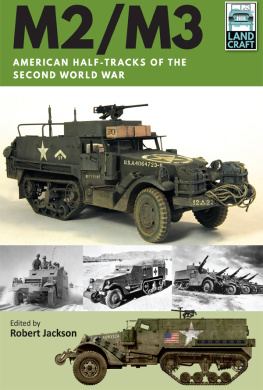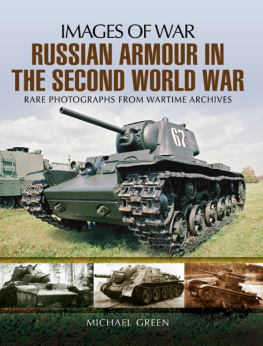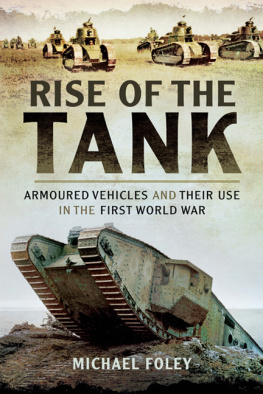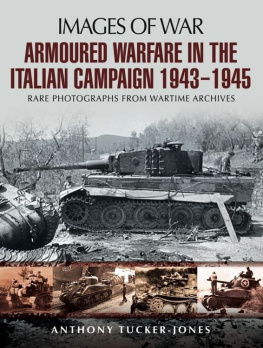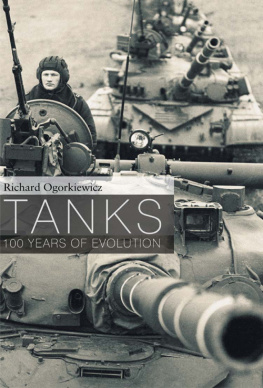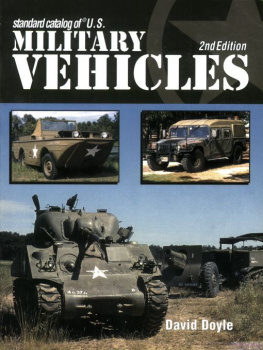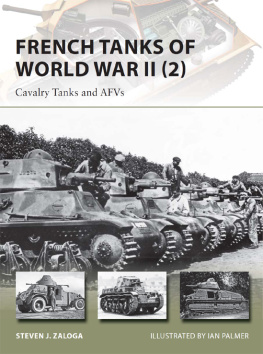To my wife Elizabeth who has stood waiting for me in all weather conditions while I photograph vehicles great and small.
Thank you for being so patient.
CONTENTS
T he author would like to thank the many owners for allowing their vehicles to be used in illustrating this work, including Damien Horn who very kindly turned out his Stoewer R200 on Jersey, Rex and Rod Cadmans late-build Panzerkampfwagen IV Ausf. J tank, which is often on display at the annual War & Peace Show in Kent. Thanks to Adrian Snell with his M14 International half-track and also Tony Oliver at History on Wheels at Eton Wick near Windsor in Berkshire. Thank you to Steve Lamonby for his various vehicles at the many shows over the years. My thanks also to Preston Isaac for allowing access to the Cobbaton Combat Collection at Chittlehampton, Umberleigh. My sincere thanks also go to all the vehicle owners who are too many to list here but very kindly displayed their vehicles at events where they could be photographed. Finally, my gratitude to the Tank Museum at Bovington with its fine displays of some very rare vehicles.
M any books have been written on the subject of trucks and tanks used during the Second World War, ranging from encyclopaedias to complete histories dealing with specific vehicles like some kind of mechanical biography. The war ended in 1945 but today there are many people who are fascinated with the vehicles used during that time and some are fortunate enough to own one or more examples of these wartime vehicles. These new civilian owners maintain the vehicles in running order and in some cases have completely restored them from piles of neglected metal that have been left to rust forgotten in a field or barn somewhere. Specialist societies have been established, such as the Invicta Military Preservation Society (IMPS) and the Military Vehicle Trust (MVT), both of which have created a support network for vehicle owners, and each society also organises a series of special gatherings where owners can display their vehicles. These events have an international following and owning and restoring lorries (trucks), motorcycles and armoured vehicles from the period of the Second World War is a very serious business. Specialist auction sites on the internet deal with the buying and selling of these vehicles and topical programmes highlighting the restoration of tanks and trucks have also appeared on television.
Several owners or more will sometimes arrange journeys to travel to historic sites where battles were fought using the type of vehicles they own and use them to drive to the location. These can cover many miles and the convoys are referred to as road runs and include examples of many different types, which have been turned out to participate in these mobile displays. Motorcycles, Jeeps, trucks and wheeled armoured cars often take part and routes are planned to pass through towns and villages in France and Belgium along with other countries that were occupied by German forces during the war. Far from being upset by the appearance of these columns passing by, the residents in these towns frequently line the streets to watch the column drive past. It is all very reminiscent of those days in 1944 when similar parades passed along the same streets and roads to liberate these towns.
Many surplus vehicles were sold off after the war to overseas armies and some were sold to civilians and used in the post-war period for a range of duties including removals, carnivals and circuses, recovery and much more. This was not the first time such a move had been undertaken. After the First World War military vehicles were sold to civilian companies for haulage and recovery work. Many vehicles of the Second World War can today be seen at military vehicle gatherings, where they are probably already familiar to visitors either through war films or museums. Gatherings of these vehicles always attract thousands of people who come to see them being put through mobility displays such as the Trucks and Troops event at the National Motor Museum at Beaulieu in Hampshire, and at the Imperial War Museum at Duxford in Cambridgeshire. Larger events attract larger crowds and some of them feature battle re-enactments where the tanks and armoured cars participate in the set-piece action displays. For example, the annual War & Peace Show and Military Odyssey, both held in Kent, each feature battle re-enactments to show how armoured vehicles and trucks operated in war and the Bovington Tank Museum in Dorset also features vehicles in arena displays using tanks from its own collection along with privately owned vehicles that attend to support the event. Such displays serve to increase the interest in trucks and tanks at all levels, and visitors to these shows also include members of modelling clubs who enjoy recreating these vehicles in minute detail in a range of scales. To cater for this interest a range of manufacturers produce kits of almost every type of armoured fighting vehicle or truck ever built and used during the Second World War, in a range of scales and materials from plastic to metal and even radio-controlled versions.
This book is intended to be used as an introduction to provide background details on some of the more common types of vehicles involved in campaigns during the Second World War and to highlight some of the vehicles that are most likely to be seen at shows such as Military Mayhem in Kent or the Bunker Bash in Essex, or be on display in one of the smaller vehicle museums such as the History on Wheels Museum at Eton Wick near Windsor in Berkshire. Many vehicles participating in these events are original but some of the scarcer types, particularly the German designs, are recreations because so few of the originals exist outside of museums. It is also intended to explain to the reader the numbers of vehicles involved in some of the campaigns where more tanks were used in one battle than several European armies combined have in service today. Also, the numbers of tanks built will come as a surprise, especially those such as the Tiger, which were not nearly as numerous as some people might suppose.
Where possible the images in this book show the restored original vehicle but this is not always possible and in some cases recreated versions stand in as very good substitutes. These recreations have sometimes been built using 1:35 scale plastic models of the vehicle as reference points, such as the German SdKfz 222 or SdKfz 223, which were in turn produced by examining the original vehicle in museums or design drawings. Thus it comes full circle with the real design inspiring a model kit for a hobby that is then used to recreate a life-size model for another hobby related through interest in wartime vehicles. Obviously the recreated vehicles do not stand up to detailed scrutiny when compared to the real thing, but they are usually good enough to give a general impression and many have been used in war films and television documentaries. The number of recreations of wartime vehicles is growing and, in so doing, showcase designs that would otherwise only ever have been seen in museums because they are so scarce. Where images of these recreated examples are used it will be made clear in the captions.
Despite their advancing age, many of the original trucks and tanks still have many years of service left in them due to the unstinting efforts of their owners. It would be fair to say that as long as there are organised displays, people will turn out to see them. The background behind the design and development of these tanks and trucks is quite well known in many cases, but what is not so well known is the history of where they were used and in what numbers. This operational use puts an entirely different understanding on them, particularly when one takes into account the conditions under which they operated. Some vehicles are quite common, such as the Jeep used by the US Army and other Allied armies, with almost 640,000 being built. By comparison the German Army only received around 52,000 Kubelwagens, a light vehicle comparable to the Jeep that served mainly in liaison roles, but they were used in every theatre of war where the German Army fought. A selection of the vehicles profiled in this book are shown in colour and in some cases a number of original photographs have been included just by way of comparison. It will be noted that some vehicle types are absent, but it is hoped that those that do appear will compensate for this. Gatherings of military vehicles are busy and exciting events, and if the opportunity arises to visit them it is suggested that one does so, because the only disappointment would be in missing what is surely the ultimate in live-action displays.
Next page
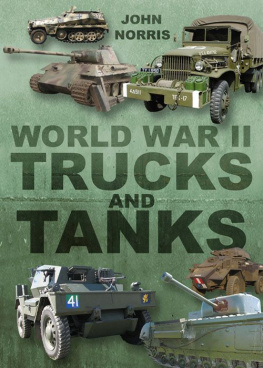

![Norris - Clybourne Park: [a play]](/uploads/posts/book/223649/thumbs/norris-clybourne-park-a-play.jpg)




